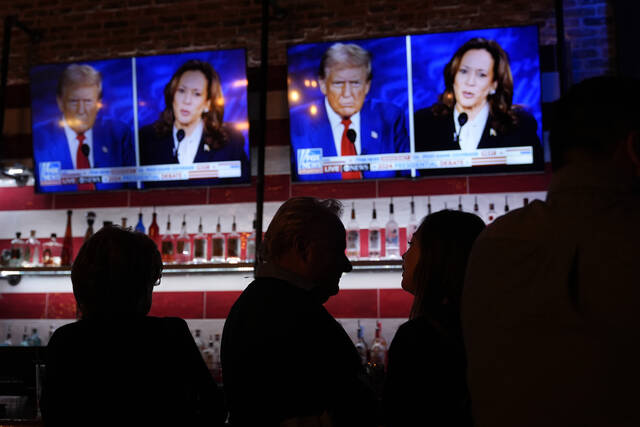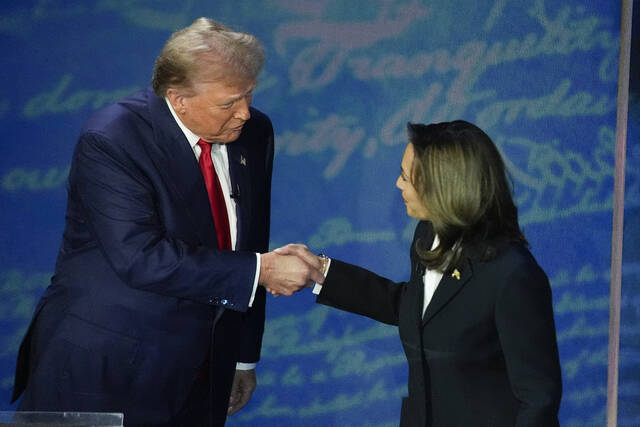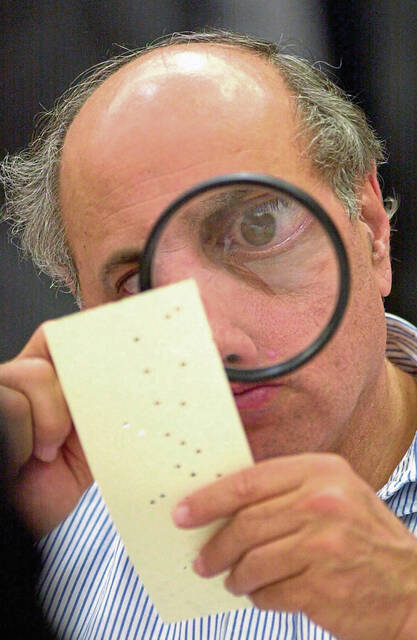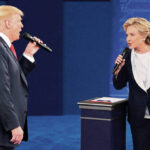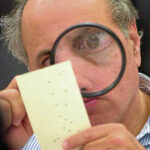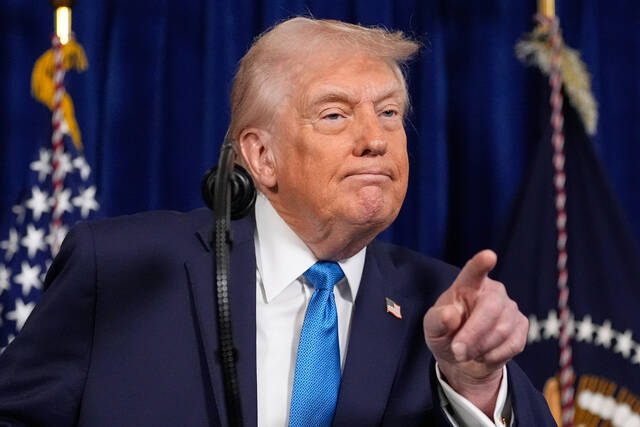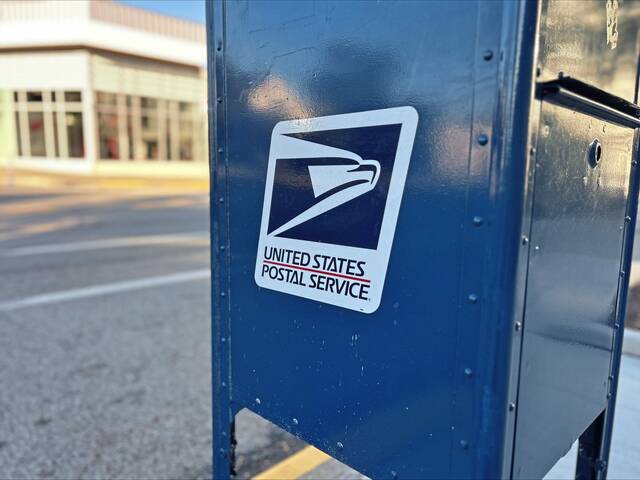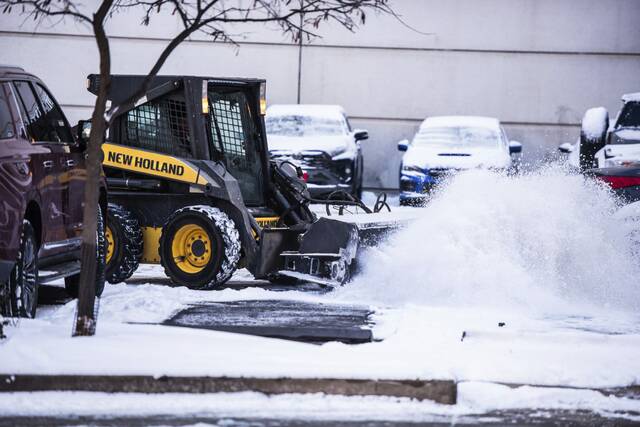Editor’s note: One-fourth of the way through this century, TribLive is looking ahead to the next 25 years, using the events of the past 25 as a roadmap of what possibly is to come. This installment of the occasional series looks at politics.
In late December 2000, America waited for the U.S. Supreme Court to issue a ruling that ultimately would determine the country’s next president.
Eight years of Democratic control of the White House were about to end. Rush Limbaugh was the top conservative voice on the radio, and Fox News was in its infancy. Pennsylvania’s status as a swing state flourished, as Democrats held a small voter registration edge.
A quarter-century later, Pennsylvania remains a political toss-up. A riot at the U.S. Capitol spurred on by claims of a stolen presidential election is four years in the past. Leaders from the major political parties blame the other side for growing divisiveness punctuated by social media vitriol and a failure to reach agreement on what is fact and fiction.
A lot has happened in the past quarter-century, and it may be a harbinger of what’s to come during the next 25 years. Political experts and observers debate just how different, or similar, the political landscape will be in 2050.
“I think we will get to a more intelligent form of government. In the next decade or so, we will get tired of presidential-dominated politics. We will have another couple of cycles of this, but we will move back to where we were,” said Ben Wren, a Republican political strategist from Greensburg.
Wren blamed much of today’s divisive political discourse on fragmentation within the Republican and Democratic parties, with extremism on both sides of the aisle leading to a breakdown in communication and consensus. He predicted it will take a major unifying event for politics of the past to return.
He suggested the 9/11 attacks in New York, Washington and Pennsylvania led to a shifting political landscape at the turn of the century and predicted it would take another traumatic event to alter the country’s politics.
“I thought the pandemic would be that challenge, but I was wrong. That just made us more divided. The next two decades will be a battle between populism and realism. I think ultimately we will be a realistic country. There have been times when these ‘isms’ pop up, but I think that the fragmentation of caucuses play into that. The excess of the 1990s was brought back by 9/11. Our period of isolation (last century) was brought back by Hitler. Something will trigger the pendulum to swing back,” Wren said.
Alison Dagnes, a political science professor at Shippensburg University, is less hopeful.
Dagnes said she thinks social media will continue to push people toward extremes.
“My hope is we are about to break the fever, but I think we are going to find ourselves to continue down the path of moving away from people we disagree with,” Dagnes said. “I don’t want to sound like it’s all doom and gloom and a prophet of sadness, but so much of the public just shrugs at all this bad behavior from our politicians, and I think that behavior will continue.”
Fragmentation of political views will lead to a further divide of the media, with a continued growth of siloed opinions based on where people get their news, she suggested.
Dagnes predicted the divisiveness in Washington will lead to states having more influence over politics. Abortion rights, gun laws and other key issues will be increasingly the domain of state lawmakers over the next quarter-century, she predicts.
“It’s going to matter where you live that will be the deciding factor in the decisions you make. Republicans may get what they wanted with the states having much of the power,” Dagnes said.
Snapshot of division
A snapshot of that division can be seen in Pennsylvania, where Republicans and Democrats have remained on equal political footing for much of the past 25 years.
In April 2000, Democrats outnumbered Republicans by about 500,000 voters. By 2024, that advantage had dwindled to about 200,000 voters.
Meanwhile, Pennsylvania had 23 electoral votes available in the 2000 presidential race. Population loss and redistricting reduced that number to 19 this year. Even with fewer electoral votes at stake, the state was still a major prize to be won this fall, and it hosted more than 50 visits from the major party presidential candidates during the summer and fall campaign season.
Pennsylvania’s clout could decline in the coming decades because of population loss and a shift in voter attitudes. Predictive analytics suggest Pennsylvania could lose one or two electoral votes by 2050.
Muhlenburg College political science professor Chris Borick said past trends suggest Pennsylvania could retain its role as a key swing state, albeit with fewer electoral votes to be had.
“In 2000, Pennsylvania was a premier swing state, and in 2024 we were still politically balanced, but the internal politics of the state flipped dramatically,” Borick said. “The areas that were the reddest are now the bluest, and now many areas that were blue are now red.
“Looking ahead 25 years, I wouldn’t be surprised if Pennsylvania is still a swing state, a pretty competitive state, but that things continue to switch internally.”
Borick predicted political division could grow in the coming years and suggested on a national level that Democrats and Republicans might alternate in power before one party takes on a longer period of control.
“I think the political landscape will be competitive but divided. We might engage with a more one-party dominant period. We’ve seen that before in America. It’s part of our political heritage. I wouldn’t be surprised if we enter one of those periods,” Borick said.


